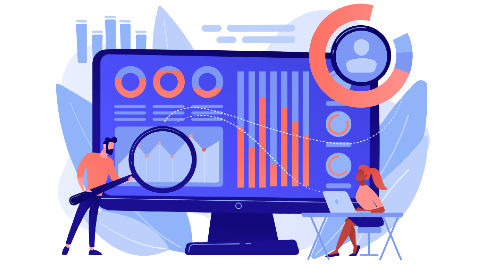The internet is a sprawling metropolis. One currency reigns supreme: website traffic. But what exactly is website traffic, and why does it carry such weight in the vast digital landscape? Traffic is the backbone of online success. It’s not a number. It powers interactions, conversions, and the growth of any internet presence.
Defining Website Traffic
Website traffic delineates the volume of visitors who arrive at a website. This metric is like foot traffic in a store. It shows the movement or influx of people who come not to look but to engage with the website. They might also make purchases. It includes the presence of every person who has viewed a webpage. It includes people no matter how they came to find it. This means if a person entered the website’s URL into their browser or clicked on a link in an email. They count as website traffic. The same goes for people who found the website via a search engine or from a suggestion on social media.
Foot traffic is key for a physical store. It boosts sales by bringing more potential customers to the store’s products. The same principle applies to website traffic, which is a key part of online success. More visitors lead to more interaction, higher engagement, and, ultimately, more conversions. Those could be purchases, sign-ups, or any other actions the website aims to encourage.

Website traffic is a vital indicator of a website’s popularity and visibility. It provides valuable insights. It shows how well a website attracts an audience. Various methods generate this traffic. Some visitors might arrive at a website by entering its URL into their web browser’s address bar. This shows direct intent or prior knowledge of the website. Others might find the website by chance. They might click on a link in an email. The email could be from a marketing campaign or a friend. Also, much website traffic comes from search engines. Potential visitors use keywords to search for information, products, or services. This leads them to websites that match their search. Social media platforms play a critical role. They direct traffic to websites. Ads or links on these platforms can guide users to a website. This will increase its traffic.
In all, website traffic is a full measure. It shows the number of people visiting a website from various sources. These include direct URLs and email links. They also include search engine results and social media recommendations. Assessing a website’s reach, engagement, and potential is key. This is true whether its goal is to generate leads, make sales, or share information.
Types of Website Traffic
Several kinds of website traffic each show a different source or type of visitor:
- Organic Traffic: This arrives via search engines and is often the fruit of robust SEO efforts.
- Direct Traffic: This occurs when a visitor types your URL into their browser or uses a bookmark.
- Other websites often direct referral traffic through backlinks.
- Social Traffic comes from social media. It can be organic or from advertising.
- Paid Traffic results from paid advertising campaigns, such as PPC (pay-per-click).
Why Website Traffic Matters
Let’s explore why it is so critical for anyone looking to make a mark online.
1. Visibility and Brand Awareness
The more traffic you have, the more people are aware of your brand. This can lead to increased recognition and status as an authority in your industry. High traffic is a sign of relevance, usefulness, and popularity among users. This is especially true for organic traffic.
2. Engagement and User Interaction
Traffic is not visiting. It’s about people interacting with your content. Engaged users are more likely to comment. They also share and return for future visits. They’re essential in building a community around your brand or message.
3. Conversion and Sales
Most websites aim to convert. They want to make a sale, get a sign-up, or spur a specific action. More traffic increases conversion odds. But, only if you optimize the site for user experience and performance.
4. Ad Revenue
For many sites, traffic translates into ad revenue. Advertisers will pay more for ad space on a website with high, steady traffic. This is because the potential for ad views and clicks goes up.
5. Market Insights
Traffic data can provide valuable insights into your audience’s behavior, preferences, and demographics. This information can drive product development, content creation, and marketing strategies.
6. Search Engine Ranking
Search engines reward websites. Being positioned higher in search results rewards them for quality traffic. A well-visited website is often seen as more authoritative and trustworthy.
7. Competitive Edge
Today’s market is competitive. Considerable website traffic can set you apart from rivals. It marks success. It can attract partnerships, collaborations, and new business opportunities.
Challenges Linked with Website Traffic
While website traffic is vital, it also brings challenges:
- Scalability: Handling an influx of traffic requires a robust, scalable website infrastructure.
- Quality over Quantity: Not all traffic is equal. High traffic is good. But, the quality of traffic is more important. Visitors interested in your offer are the ones it means.
- More traffic means more security risks. So, guarding against cyber threats is essential.
Conclusion
Understanding website traffic is crucial for anyone looking to prosper online. It’s more than a measure of popularity. It shows the health, influence, and commercial potential of your website. Solid traffic shows an active web presence. It sets the base for sustainable growth.
Mastering the art of attracting and maintaining traffic is so essential. It needs a balance of marketing, optimization, and content strategy. This balance needs a constant check on your visitors’ behaviors and needs.
In the wider digital world, website traffic is a universal measure. It shows how well a site is doing and how much it can do. It shows the life of an online presence. It supports the pursuit of better user experiences. It also helps with business goals and long-term digital triumphs.
